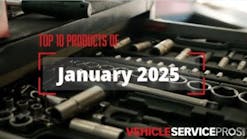The driveline connects the transmission to the rear axle input, explains PACCAR Parts' Product Director Pepe Ramos.
PACCAR Parts (www.paccarparts.com), a division of PACCAR, Inc., is a global distributor of aftermarket parts for heavy and medium duty trucks, trailers, buses and engines.
"The driveline transmits the energy output from the transmission to the rear axle input," Kook says. "It also acts as a torsional damper between the transmission and rear axle. This protects both transmission from rear axle stall and protects the rear axle from harmful transmission accelerations."
According to Meritor's, Product Technical Specialist Eric Iott, the driveline’s main components comprise the end yoke (or flanges), U-joint (sealed or greaseable), fastener hardware (straps), weld yoke, tube, bearing stub shaft, center bearing, washer and nuts, slip yoke assembly (slip yoke, spline plug and sealing system) and main shafts.
Meritor, Inc. (www.meritor.com) is a global supplier of axle, brake and suspension solutions to OE manufacturers and the aftermarket.
The main shafts include:
Coupling shaft assembly. The section between the transmission that contains the center bearing. Depending on the vehicle’s wheelbase, there could be more than one coupling shaft.
Slip shaft assembly. This shaft attaches to the coupling shaft(s) and to the rear axle input. Due to suspension movement, this shaft contains a slip yoke assembly, which enables the suspension to move freely without binding or damaging the driveshaft assembly during suspension articulation.
Inter-axle shaft assembly. This shaft, which has the potential for the most wear in the driveline system, is only used when a tandem or tridem axle assembly is designed into a chassis. It is a relatively short shaft − less than 35 inches − that attaches the forward axle carrier to the rear carrier. The shaft’s operating angles are steeper and larger due to the closeness and design of the axle packaging system. It is also attached to two independently moving axles, which means it is constantly changing angles and length.
U-Joint Styles:
- Half-round or full-round designs; some offer extended lube intervals up to 100,000 miles
- Sealed U-joints; lubricant intervals are not required, reducing maintenance and lowering overall maintenance costs


